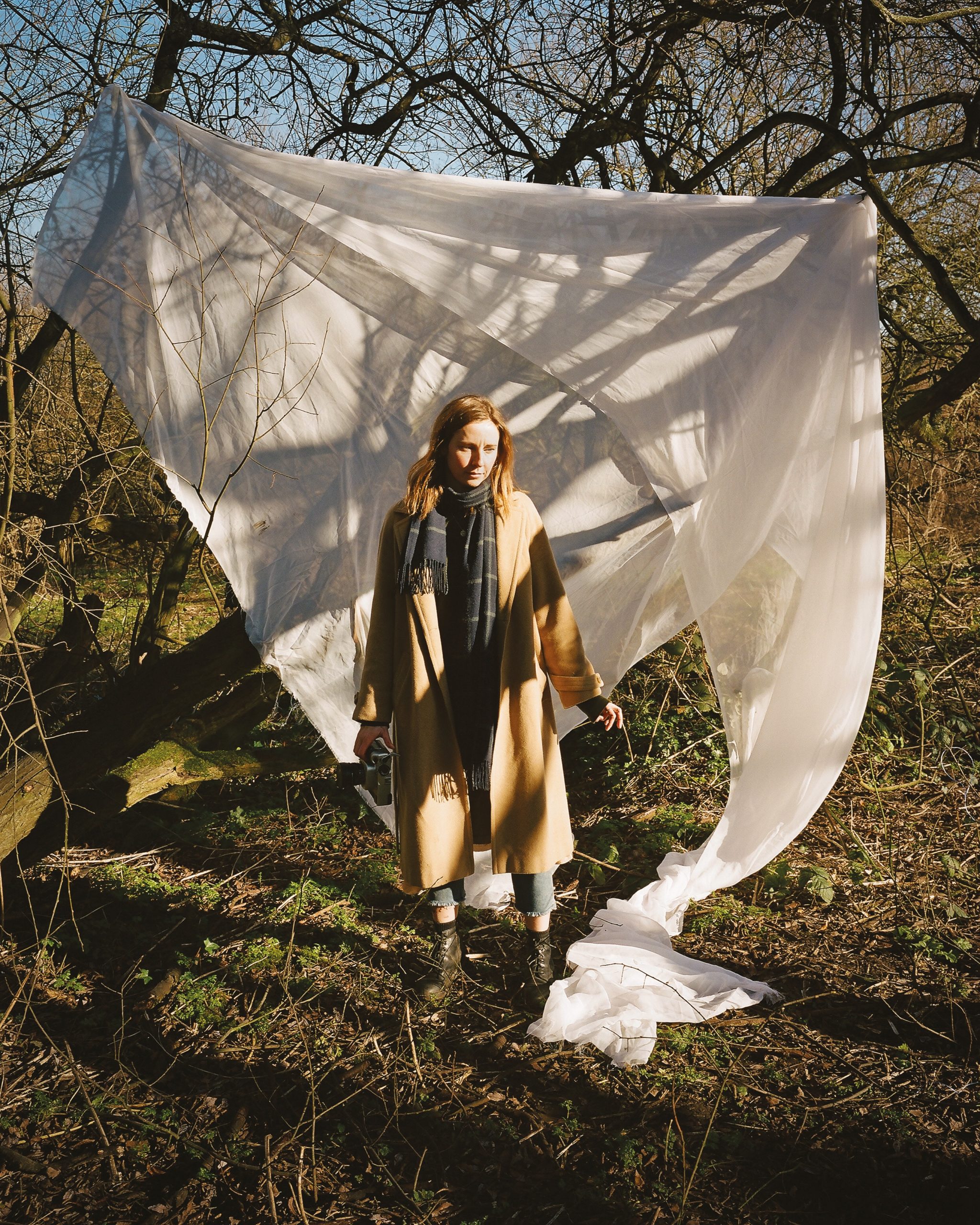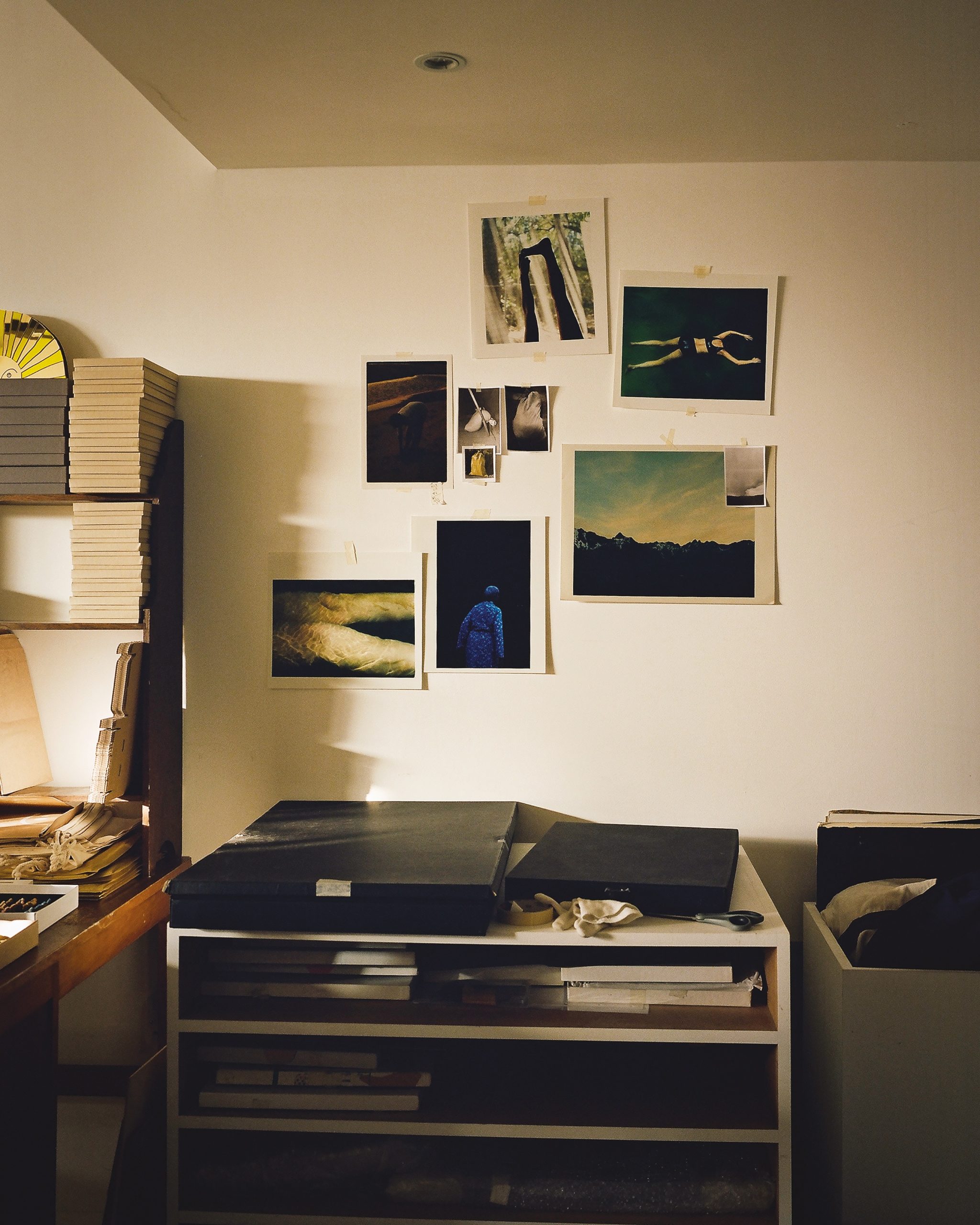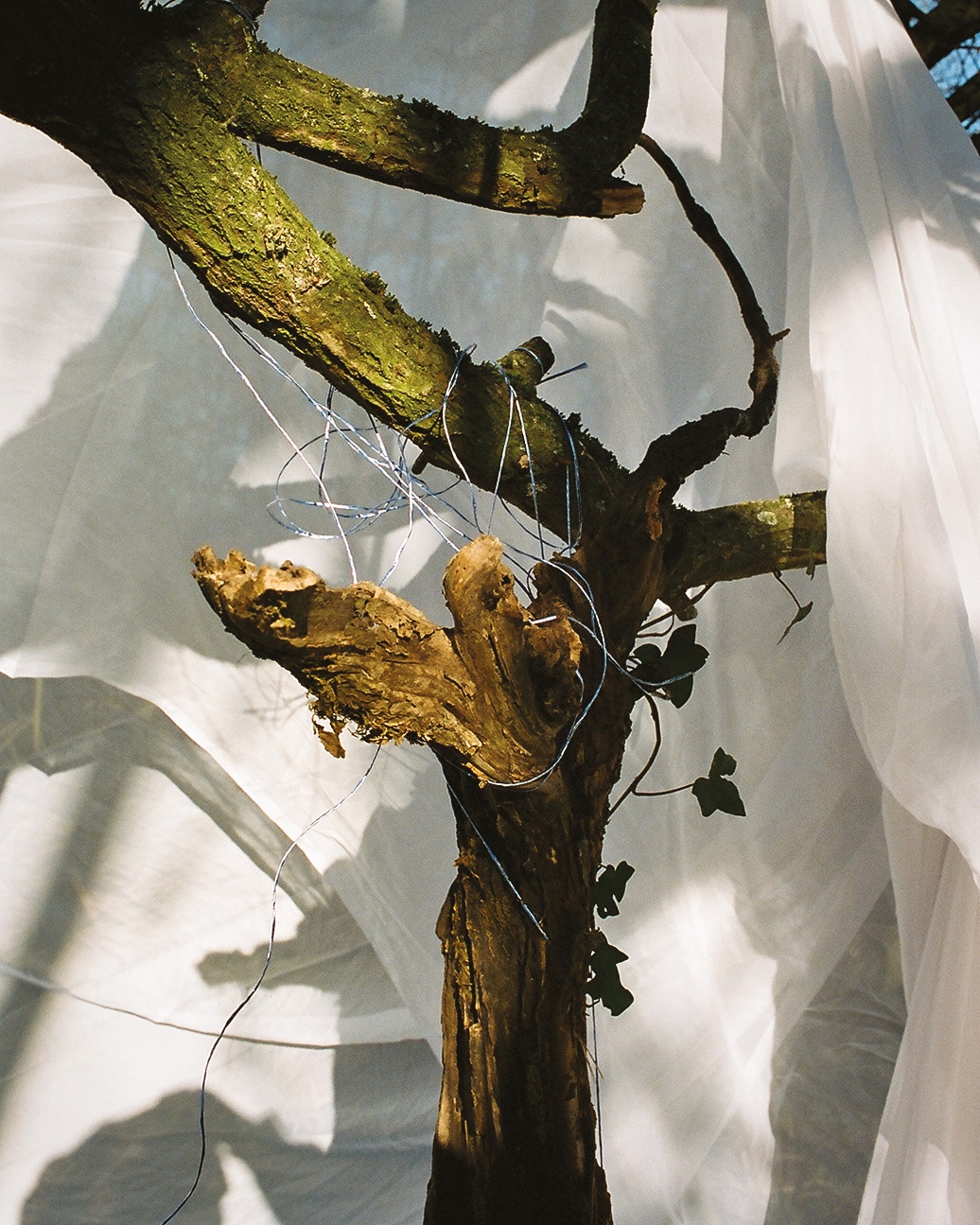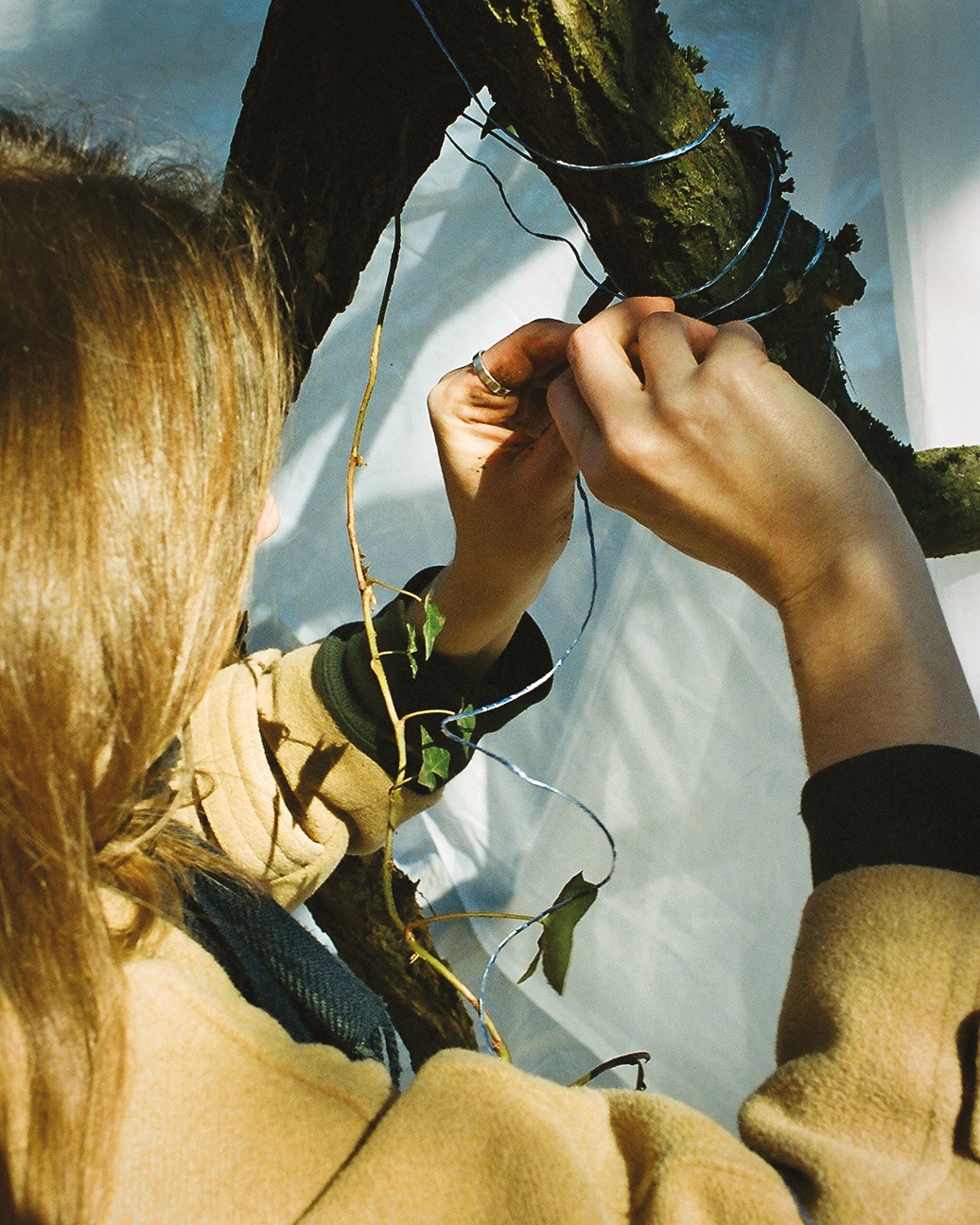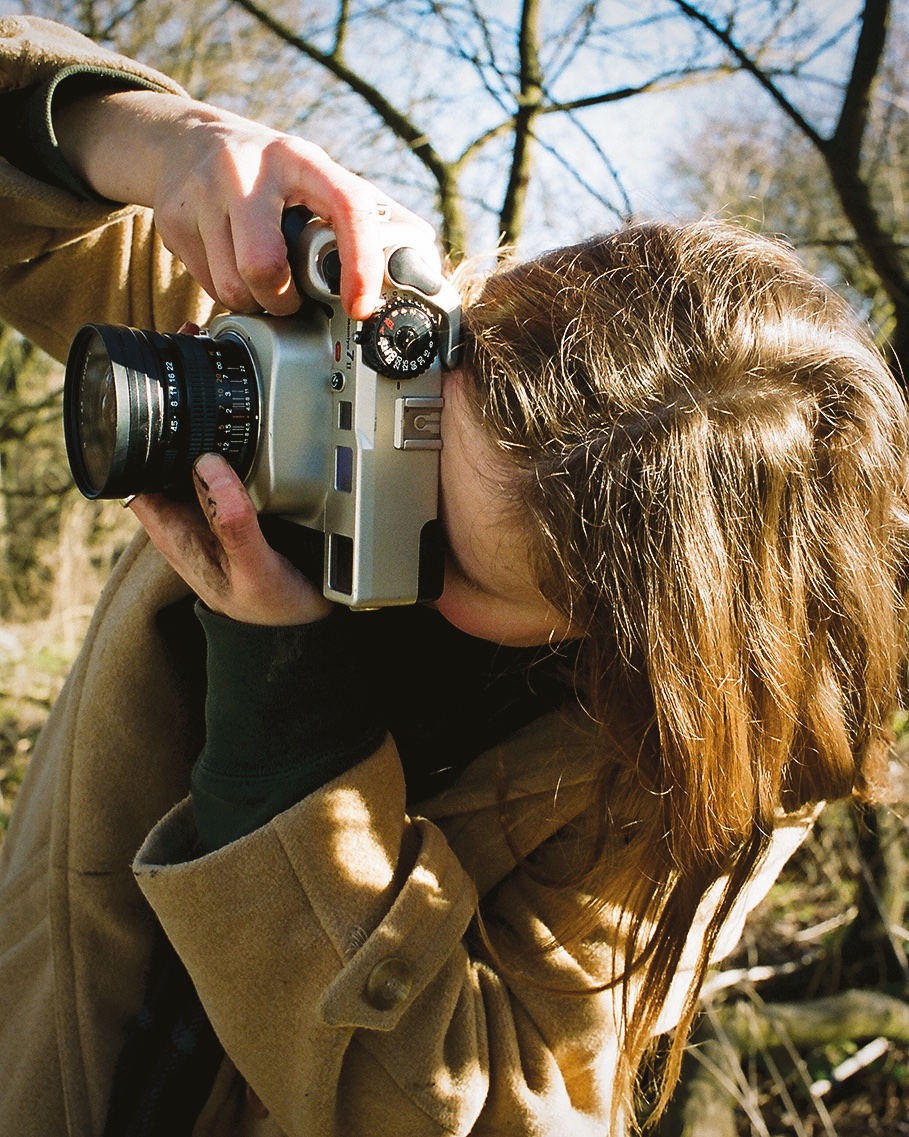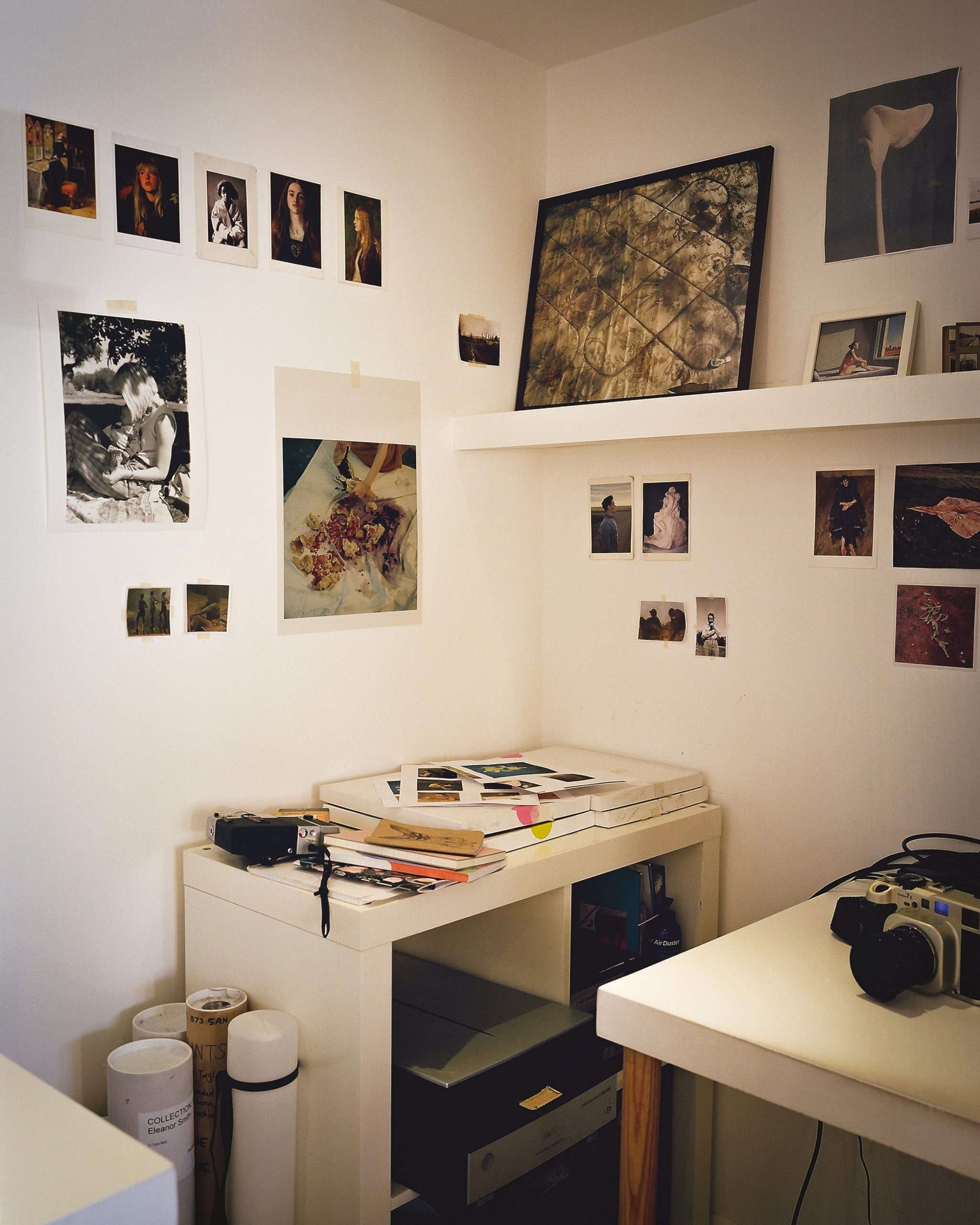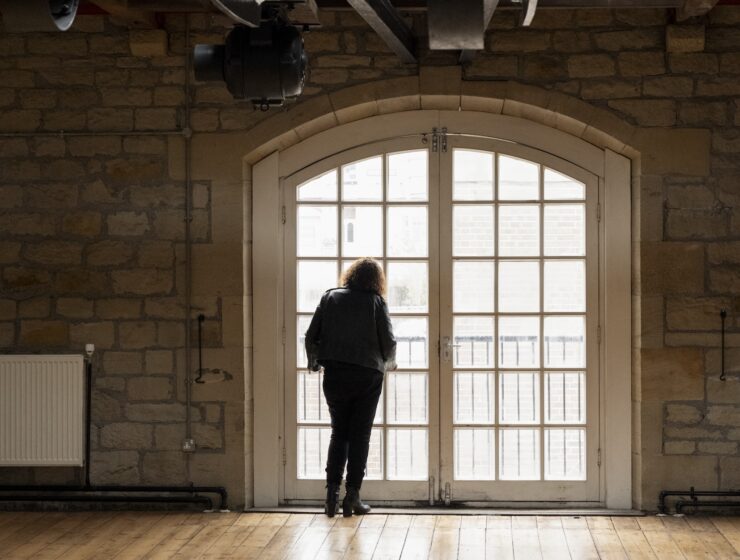Words and photography by Alice Zoo.
The London-based photographer walks us through her creative process, moving between her Tottenham studio space and the nature that surrounds it
Out on the marshes with photographer Suzie Howell, it’s a piercingly gorgeous winter day – the kind that only occasionally presents itself in January. I watch her climb a tree. Intense concentration consumes her face as she pushes off from one branch to another with one hand, bunched white silk and a fistful of crocodile clips held in the other.
Howell lives and works in London, and shoots commissions for the likes of lifestyle brand Toast and The New York Times. Having studied photography at Bristol Filton College and London College of Communication, she now shares a studio space with three other artists. “It’s somewhere to edit, or look at prints,” Howell says later, “but most importantly it’s somewhere I can go to talk to other people. When I don’t quite know how to manage my day, I go there and feel uplifted.”
There is no room to shoot inside, but Howell is not really a studio photographer anyway. The Tottenham space is the anchor, somewhere she finds respite from the solitary life of the freelancer. But the bulk of her work takes place outside: her practice is deeply informed by the natural world, and exploring it on foot. “When I’m feeling a bit lost, or don’t know what I’m doing with photography or something else in my life, I go walking,” she tells me. And so we find ourselves striding out onto Walthamstow Marshes and fixing up a studio in the open air, as Howell often does.
The forward motion of walking, its open-ended sense of possibility, lends itself to an experimental artistic temperament. Howell recalls that her experimentalism was restrained early on by fears about its flimsiness, or her difficulty in explaining it.
“I used to be reserved, and worried about what work I was making, that I had to fit into some kind of category,” she says. “I often stopped myself from shooting because I thought, ‘Oh no, that’s too weird…’” It was conditioning left over from attending a university that emphasised thorough project research and careful justification of every creative decision. “I was shooting things and desperately trying to find meaning to them,” she remembers. “I’ve let go of that now.”
Howell resolved to simply begin making: to photograph what she was interested in, even if she didn’t yet know why. She walked and photographed, collecting objects, moving pieces of the landscape around her, waiting until she had developed her film and printed it to form an impression. Her work is a practice in the truest sense of the word, a coming-to-know, as opposed to a means of expressing a foregone conclusion.
Some of the experiments go nowhere while others resonate, expressing something she was unable to articulate at the time. “A lot of my marshes work came about like that,” she says. “I was photographing weird stuff I’d found, and I couldn’t quite work out why.” This years-long project became Inside the Spider, a charged exploration of form and vulnerability in which he worked with collaborators and found materials to reflect on her experiences exploring the wetlands and wandering off their paths.
“It’s a bit sad when you find some of these things sometimes. Why has this been forgotten about? I want to pick it up and turn it into something that’ll be remembered”
Her interest in form also shapes her work with found objects: pieces of scrap metal, an old tarp, some plums that she found in the street and kept in her freezer until the day she took them out and taped them to a window. A tenderness towards “these accidental, forgotten things” marks her interactions with them. “It’s a bit sad when you find some of these things sometimes. Why has this been forgotten about? I want to pick it up and turn it into something that’ll be remembered,” she says. “Like: you are worth something, weird little thing.”
Among the bare trees of today’s temporary studio, she disappears for a moment while I photograph the silk she has clipped between the branches. She returns with a twisted old log that she refers to thereafter as “he”, “him” and “this guy”. She strings him up in blue twine and photographs him hanging against the silk. Looking through my lens at the wood against the backdrop Howell has made, I know exactly what she means: I can see him too.
Most of all, Howell is trying to communicate sensation. She tells me that she struggles to express herself in words, and can be overawed when confronted with (for example) a dramatic vista, not knowing how to capture it. Instead, her eyes are drawn to the rusted nail lying at her feet. I think of the plums in her freezer, “these perfectly formed bits of brightness”. “It’s not something you can control, what people feel or see when they look at your work, but that’s fine,” she says. “I want people to project themselves onto my work, to read their own emotions into it, because I can only communicate how I feel.
There is a sense of the provisional in Howell’s constructions that reflects her mixed-media sensibility. Much of her present research is centred around poetry, theatre and painting. “There’s a freedom within the painting world,” she says. “It has this way of asking about the nature of being. You’re able to ask questions.” It is this openness that Howell cultivates in her work. And, of course, there is sculpture. “I’m interested in sculpture and still life in the same way that I’m interested in the body,” she says. “They can both represent something bigger than what they are.”
“My approach to taking photos echoes painters and sculptors, who do not try and capture a perfect reality, but instead depict what they’re feeling.”
Given these influences, it comes as little surprise that Howell prints all the work herself, and shoots on film. She embraces the “magical” accidents and contingency that are inherent in analogue processes: light leaks, under or over exposure, water stains; that you do not know how an image will look until much later. You are dictated to, she says; fiddling with colours and tones until, suddenly, an image reveals itself.
As with painting and sculpture, there is a forced slowness and consideration, a physical involvement that digital processes do not provide. “There’s something in the velvet-soft shadows in film that I find moving,” she says. She does not see her chosen processes as necessarily superior though. Instead, these were the tools she learned with; this is her vocabulary. “My approach to taking photos echoes painters and sculptors, who do not try and capture a perfect reality, but instead depict what they’re feeling,” she continues. “I can only really capture a version of reality anyway.”
Howell’s newest project speaks to a reality that has become familiar over the past year. With a working title of Distance – in place since well before the pandemic – it explores “that common, unsettling feeling of always striving to be somewhere other than where you are… of being lost, and longing for something, somewhere else.” She is making new pictures for the project, and is back in the darkroom, printing and reworking old ones too.
It all hangs together, like an old log in the light: the provisional quality of her photographs, their alternating boldness and tentativeness, the decision to make without an endpoint in sight, to forge ahead and follow intuition. Hence the experiments; the walking; the blue twine; the feet that carry on across the wet winter ground. “I’m trying to fix a feeling of being lost by getting lost, in a way,” she says. “You just keep going.”
Explore more studio visits
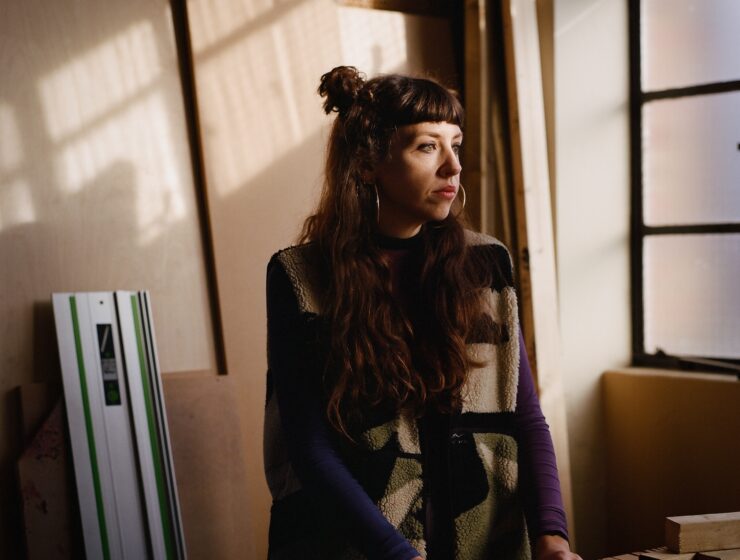
Working in industrial spaces for 10 years, and fascinated by the contemporary experience of images, Felicity Hammond makes installations combining imagery and sculpture
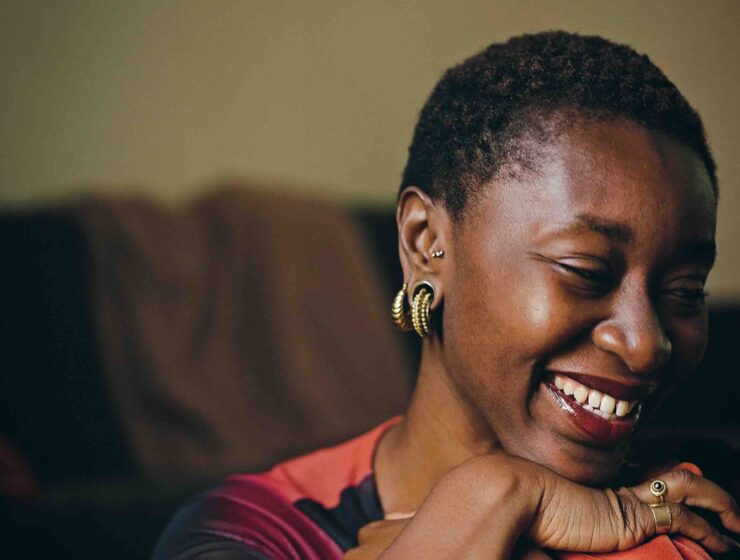
Nearly a decade after winning BJP’s Breakthrough Single Image award, Adama Jalloh has become a trusted portrait photographer
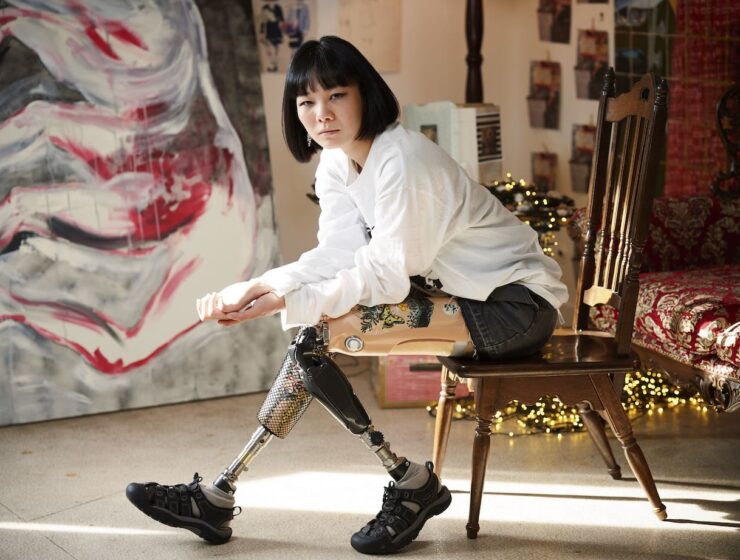
Playful yet deadly serious, Mari Katayama’s studio is testament to her fiercely independent approach to art and creativity

